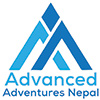Tibet FAQ's

Traveling to Tibet is a unique and awe-inspiring experience, but it comes with specific requirements and considerations due to its remote location, high altitude, and political sensitivities. Below are the most frequently asked questions (FAQs) about traveling to Tibet:
1. Do I need a visa to travel to Tibet?
Yes, in addition to a Chinese visa, you need a Tibet Travel Permit to enter Tibet. This permit can only be arranged through a registered travel agency. You cannot travel independently in Tibet; you must be part of a guided tour.
2. How do I obtain a Tibet Travel Permit?
Your travel agency will apply for the permit on your behalf. You’ll need to provide:
• A copy of your passport.
• A copy of your Chinese visa. (Obtain from Chinese Embassy in Nepal)
• Your travel itinerary.
The permit is usually issued 7-15 days before your trip.
3. Can I travel to Tibet independently?
No, independent travel is not allowed in Tibet. You must book a tour through a registered travel agency, and you will be accompanied by a guide and driver at all times.
4. What is the best time to visit Tibet?
The best time to visit Tibet is from April to October, with May to September being the peak season. During these months, the weather is mild, and the roads are accessible. Winter (November to March) is extremely cold, and some areas may be closed due to snow.
5. Is altitude sickness a concern in Tibet?
Yes, altitude sickness is a significant concern in Tibet, as Lhasa sits at 3,656 meters (11,995 feet) and many areas are even higher. To minimize risk:
• Acclimatize slowly by spending a few days in Lhasa before heading to higher altitudes.
• Stay hydrated and avoid strenuous activity initially.
• Consult your doctor about medications like Diamox (acetazolamide) for altitude sickness prevention.
6. What are the must-visit places in Tibet?
Top destinations in Tibet include:
• Lhasa: Visit the Potala Palace, Jokhang Temple, and Barkhor Street.
• Mount Everest Base Camp (North Side): For breath-taking views of the world’s highest peak.
• Lake Yamdrok: A stunning turquoise lake.
• Shigatse: Home to the Tashilhunpo Monastery.
• Namtso Lake: One of the highest saltwater lakes in the world.
7. What currency is used in Tibet, and can I use credit cards?
The official currency is the Chinese Yuan (CNY). Cash is preferred, especially in rural areas. ATMs are available in Lhasa and Shigatse, but credit cards are rarely accepted outside major hotels.
8. What should I pack for a trip to Tibet?
Packing essentials for Tibet include:
• Warm clothing (even in summer, temperatures can drop significantly).
• Sturdy, comfortable shoes for walking and trekking.
• Sunscreen, sunglasses, and a hat to protect against strong UV rays.
• A reusable water bottle and water purification tablets.
• Medications for altitude sickness and a basic first-aid kit.
9. Is Tibet safe for travellers?
Tibet is generally safe for travellers, but it’s important to respect local customs and regulations. Political discussions and protests are strictly prohibited. Always follow your guide’s instructions and stay informed about local conditions.
10. What is the food like in Tibet?
Tibetan cuisine is hearty and suited to the high-altitude environment. Must-try dishes include:
• Tsampa: Roasted barley flour, a staple food.
• Thukpa: Noodle soup with vegetables or meat.
• Momos: Tibetan dumplings.
• Butter tea: A traditional salty tea made with yak butter.
Vegetarian options are limited, so inform your travel agency in advance if you have dietary restrictions.
11. Can I use my mobile phone in Tibet?
Yes, but coverage may be limited in remote areas. Purchasing a local SIM card (China Mobile or China Unicom) is recommended for better connectivity. Wi-Fi is available in hotels and some cafes in cities like Lhasa.
12. What cultural etiquette should I follow in Tibet?
• Always walk clockwise around stupas, temples, and other religious sites.
• Remove your shoes and hats before entering temples.
• Do not touch or point at religious artefacts or statues.
• Ask for permission before taking photos of people or inside temples.
• Avoid discussing politics or the Dalai Lama.
13. How do I get to Tibet?
The most common ways to reach Tibet are:
• By air: Fly to Lhasa Gonggar Airport from major Chinese cities like Beijing, Chengdu, or Kathmandu.
• By train: The Qinghai-Tibet Railway connects Tibet to cities like Beijing, Shanghai, and Xining. The train journey offers stunning views but takes longer.
• By road: Overland routes from Nepal (via the Nepal-Tibet border) are possible but require additional permits.
14. What permits are required for traveling in Tibet?
In addition to the Tibet Travel Permit, you may need:
• Aliens’ Travel Permit: For travel outside Lhasa (e.g., to Everest Base Camp or Mount Kailash).
• Military Permit: For restricted areas near the border.
• PSB Permit: For certain remote regions.
Your travel agency will arrange these permits as part of your tour.
15. Is travel insurance necessary for Tibet?
Yes, travel insurance is highly recommended, especially for high-altitude travel. Ensure your policy covers medical emergencies, evacuation, and trip cancellations.
16. Can I visit Mount Kailash and Lake Manasarovar?
Yes, but these sacred sites require additional permits and are part of longer tours. The Kailash Mansarovar Yatra is a popular pilgrimage route but involves three days trekking(Kora) at high altitudes.
17. What is the weather like in Tibet?
Tibet’s weather varies greatly by season and altitude. Summers are mild with occasional rain, while winters are extremely cold, especially at night. Always check the weather forecast before your trip and pack accordingly.
18. Can I take photos in Tibet?
Yes, but there are restrictions. Avoid taking photos of military installations, checkpoints, or sensitive areas. Always ask for permission before photographing people or inside religious sites.
These FAQs should help you prepare for your journey to Tibet. Let me know if you need more detailed information on any specific topic!
